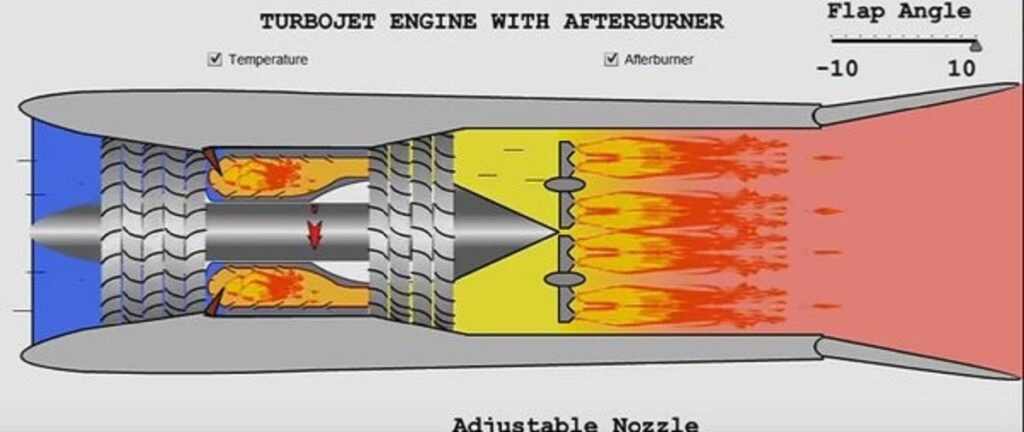The process isn’t too complex, I’ll attempt to keep my answer the same. Here’s a (simple enough) diagram of a jet engine that I’ll refer to in my answer:
For simplicity’s sake I’ll break the jet engine into three parts:
- Air intake (coloured blue)
- Turbines (silver things between the blue and yellow)
- Exhaust (red area at the very right)
Simply put air is drawn through the air intake (1) by the rotation of the turbines (2) which are essentially just a series of tightly packed propellers for lack of a better description. The turbines rotate (like a propeller) and compress the air to create thrust in the form of exhaust air (3) that exits the engine a lot faster than it went in. All jet engines do this regardless of whether they have an afterburner or not. The engine on a commercial airliner (like a 747 or A380) work this way.
Where an afterburner comes into it is where the yellow colour in the image turns to red. An afterburner works by injecting jet fuel into the exhaust air and igniting it. The ignition of the jet fuel increases pressure within the exhaust of the engine, thus increasing thrust. The pressure created by the turbines forces all exhaust out the back, even with an afterburner.
When you see flames coming out the back of a jet engine (like on military aircraft) this is because they have engaged their afterburner. However like commercial jet engines they can also operate without the afterburner.
Of course, the sequence of events is more complex than this but for the sake of this question I hope you find this helpful. Have a good one!
Author – Tyron Bicknell






